Design and principle of operation of a gas water heater for heating a swimming pool: rating, pros and cons, price
Of all the possible options, heating a pool with a gas water heater seems to be the most effective.The task of maintaining the desired level of hot water temperature looks quite simple at first glance. A lot will have to be done before it will be possible to automate the process and make the process of relaxing in the pool more comfortable.
The content of the article:
Pros and cons of gas water heaters
The simplest, but most expensive way is to purchase a ready-made gas water heater of a specialized model. Such devices can work for days, providing heating for the pool at any air temperature.
The only drawback of such a device is that the price is about an order of magnitude higher than for a medium-power gas water heater, and in terms of operating principle they are practically the same. Therefore, using a gas water heater to heat a pool is beneficial in terms of saving money on the purchase of equipment.
In order for a gas fuel column to be used for heating, you will need to do the following:
- select the type of gas fuel;
- calculate the required power of the device;
- plan the connection diagram taking into account tying with additional devices.
In addition, it will be necessary to protect the geyser, since the device was originally designed in its functions to produce hot water in small quantities.But not for heating a pool, which can be up to 10 m3 water. Therefore, you need to take into account all the disadvantages and advantages of a gas apparatus.
Interesting: How to make a wood-burning stove for a swimming pool with your own hands?
Positive sides
The main advantages of using a geyser:
- low price;
- simple design of the device;
- the ability to precisely regulate the water flow for heating the pool.
Many models have a non-volatile design, so they can work even in the absence of electricity in a country house or country house. But in this case, an additional container of water (water tower) will be required, otherwise the automatic dispenser simply will not start the gas burner due to low pressure in the heat exchanger.
Disadvantages of heating a pool using a gas water heater
A home gas water heater can only in theory be used to heat a swimming pool. The main disadvantage is that the pool heating apparatus will need to be purchased ready-made. No modifications to old models or homemade heaters are allowed when using gas fuel.
The disadvantages include dependence on gas. It is easy to buy it at any gas car filling station, but you will still need to spend money and time on purchasing fuel. If mains gas is used for the dispenser, then, in addition to the device, you will need to install a gas meter and also lay a pipe to the connection point.
Most geysers have a flow-through operating system. That is, if water for heating is supplied directly, a powerful pump and a reinforced filter will be required. Otherwise, all organic matter and fine sand, street dust, which is always abundant in the pool water, will settle inside the heat exchanger.Over time, the column may burn out.
Design and principle of operation
The pool heating column can be connected to a centralized household gas network, to a cylinder with liquefied propane-butane. If the house already has a central gas supply pipe, then there is most likely also a boiler with a heating boiler or a double-circuit heating device.
In theory, a boiler apparatus with two circuits, for hot water and home heating, can be used to heat a swimming pool, but only in theory. In practice, owners of double-circuit boilers do not really want to risk an expensive device. Calling a technician and washing a bithermic heat exchanger are expensive. If you heat the pool with a boiler, you will have to wash it at least twice during the summer. It all depends on the degree of contamination of the pool’s water volume.
Therefore, to heat the pool, an inexpensive direct-flow gas water heater of the required power is purchased. The heat exchanger of the geyser can be washed with your own hands.
Important! Essentially it is a copper pipe bent into a coil around a copper screen. Whereas a bithermic heat exchanger is a honeycomb, so washing requires a specialist, equipment and special reagents.
Heating the pool with a gas water heater
The instantaneous water heater must be installed in a closed, well-ventilated room. The chimney can be made through the wall (coaxial version), and an additional 50 liter boiler can be installed here.
If there are no more gas appliances in the house, then you will need to allocate a place to install a gas meter. If there is no electricity, you will need a place for a powerful battery and a voltage converter.
To connect the dispenser to the network gas supply, you will need permission from the Gas Administration.In addition, you will need to create a form and passport for the gas heater.
Pool heating with gas cylinder
A simpler option is to connect and use propane-butane. A gas cylinder, like a water heater, needs to be registered with the UGC, but in practice almost no one does this.
A water heater can be installed in a dacha and used to produce hot water - for a shower or to heat a swimming pool. For the winter, the equipment is dismantled. The only negative is that the cost of heating will be 30% more expensive than with network gas.
Important! A direct-flow column using bottled fuel is the only effective way to ensure trouble-free heating of a pool for many months of operation.
What to look for when choosing?
The first step is to select the power of the water heating device. According to their thermal performance, water heater columns are divided into:
- low-power - hot water consumption up to 10 l/min, power - up to 17 kW/h;
- medium power with a flow rate of up to 14 l/min, power - up to 25-30 kW/h;
- increased power - more than 20 l/min and power from 30 to 45 kW/h.
The children's pool fits up to 3 m3 water, accordingly, to heat the entire volume with a low-power model with a flow rate of 10 l/min, it takes 5 hours. If you install a powerful heating column, the required time will be reduced to 1.5 hours.
After warming up the entire volume of water in the pool, the column is switched to reduced power mode. Warm water will flow into the heating circuit, so instead of the required 25-30 kW/h of power, only 10-15 kW/h will be needed.
Therefore, to heat pool water, it is best to choose models with a large power range, 10-30 kW/h, and built-in automatic control for maintaining the water heating level.That is, the electronics will automatically change the burner power depending on the temperature of the incoming water so that the output water flow is stable within 35-45OWITH.
Boiler models for heating water with gas, prices
To heat the pool, you will need a column model with automatic overheating protection, a built-in flow sensor and an internal power supply (batteries) for the ignition and thermostat. Only in this case can trouble-free operation be guaranteed.
BOSCH WR 15-2 B
One of the most reliable models is a stainless steel heat exchanger. There is a built-in water flow sensor, overheating protection, and automatic adjustment of the degree of heating of the water flow when the temperature and pressure of the incoming water changes.
Price - 35 thousand rubles. Ignition from a set of batteries.
MIZUDO VPG 4-14 T
The characteristics are more like a heating boiler. There is a built-in flow sensor, overheating protection, combustion front control and an automatic water temperature controller at the outlet of the heat exchanger.
Power - 28 kW/h. There is also electronic ignition and a memory function for settings.
Price - 24 thousand rubles. Country of manufacture: China.
NEVA LUX 5514E
The model is produced in Russia. Power - 27.6 kW, water flow - 14 l/min. There is a flow sensor and overheat protection. Temperature control is manual only.
Price - 18 thousand rubles. It can work even on water heavily contaminated with salts, and can be used for direct heating of a swimming pool, provided that an anti-dirt filter is installed.
BOSCH WTD12 AME
Produced in Portugal. Operates only on mains gas; connection to propane-butane requires replacement of nozzles. Power - 20.8 kW with water flow up to 18 l/min.Electronic ignition and an automatic water temperature maintenance system are installed. One of the few models that can be started at a pipe pressure of 0.1 bar.
Price - 54 thousand rubles, warranty - 2 years.
How to connect to the tank?
In addition to the column itself, for the pool heating system to operate, you will need a pressure tank, as well as a water pump with stepwise adjustment of water flow and a built-in flow sensor. Approximately productivity should be at least 15-25 l/min.
The pump is connected to the inlet pipe of the water heater. Its task is to create excess pressure (provide the required water flow) in the pipe, otherwise the pool heating system will not start. All instantaneous water heaters are equipped with a water pressure sensor in the pipe.
A pressure tank is installed in front of the pump. This can be a container raised to a height of up to 3 m, or an expansion tank. Its task is to create excess pressure in front of the pump, otherwise when the heating starts, the flow switch will not turn on and, accordingly, the column will not work.
The heating system can be connected directly if the characteristics of the water heater heat exchanger allow. In this case, the pool, in addition to heating, must be equipped with an autonomous water filtration system. In this case, the intake pipe should be located at a height from the bottom of at least 25-30 cm.
The second option for connecting heating is through an additional double heat exchanger. In the first case, the column heats the primary water flow to a high temperature (up to 60OC) and transfers part of the heat through an autonomous filtration system. This scheme is used for heating stationary outdoor pools with a volume of up to 10 m3.
How to use?
If the heating system operates through an additional heat exchanger, then the water filtration pump starts first. As soon as the system is filled with water, you can open the tap on the pressure tank and turn on the pump, pumping water through the column and the heating circuit.
All that remains is to adjust the temperature of the water flow, press the ignition button and open the hot water tap to the pool. As soon as the pump creates pressure in the pipe, the burner will ignite and the heating system will start.
Other methods of heating an artificial reservoir
There are several ways to heat a pool. The simplest is to use a remote wood stove with an additional pump. The heating system is quite simple, but due to its low power it is only suitable for small pools, up to 5 m3. Typically, this scheme is used for country ponds.
For permanently operating pools of medium and small volume, solar heaters of both homemade and industrial manufacture are often used. The disadvantage of the scheme is the dependence of heating on the weather. Most often, heating takes up to 5 hours.
For private households, portable stoves using liquid fuel (diesel fuel and waste oil) are often used. The efficiency and heating rate are higher than those of gas water heaters, but when liquid fuel burns, a huge bluish cloud of combustion products is formed. Therefore, the scheme is used only as a temporary one and only for the initial heating of large-capacity pools, up to 40-60 m3.
Results
The main thing in arranging a pool heating with a gas water heater is to choose the right model of water heating device. The use of full-flow heaters greatly simplifies the circuit, making it more reliable and safe.Heaters with built-in tanks are more suitable for home pools, as well as swimming pools for baths or saunas.
Tell us about your experience using the speaker. What technical problems did you encounter and how were they resolved? Also, bookmark the article and share it on social networks, this will help promote the site.
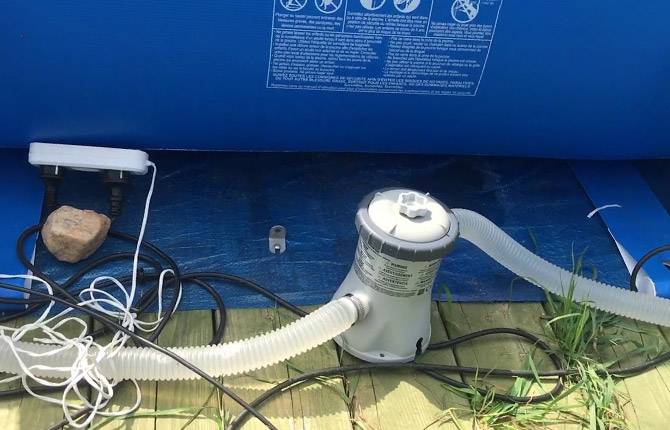
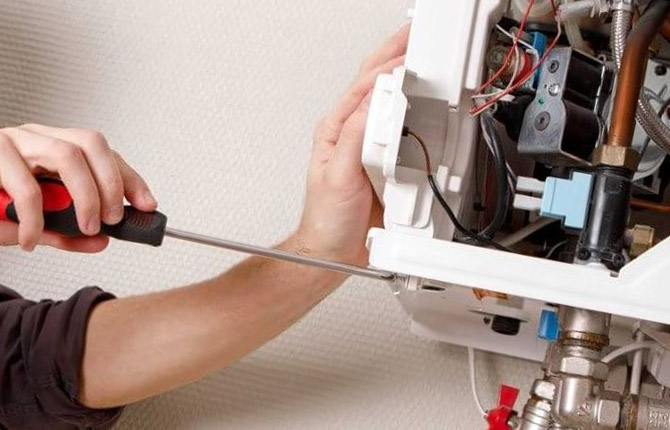
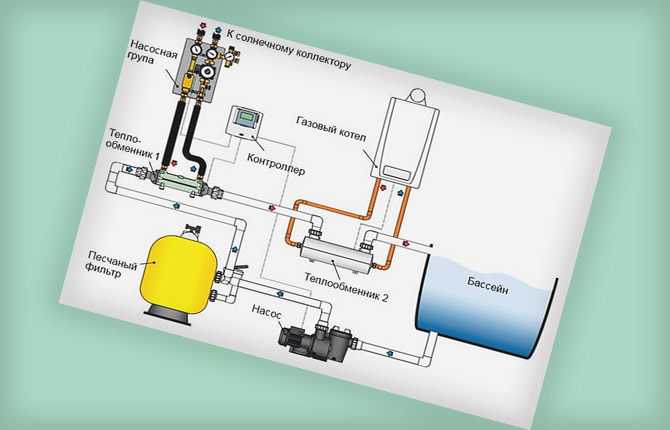
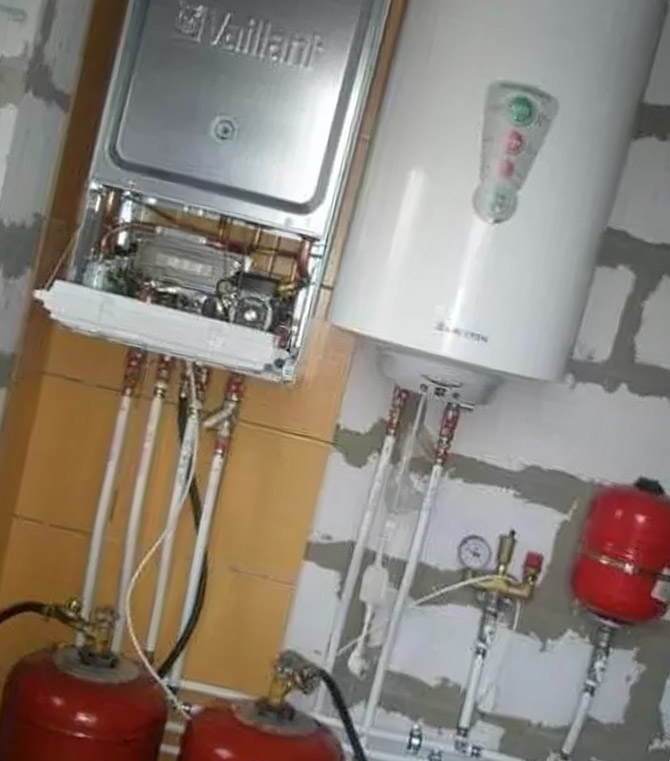
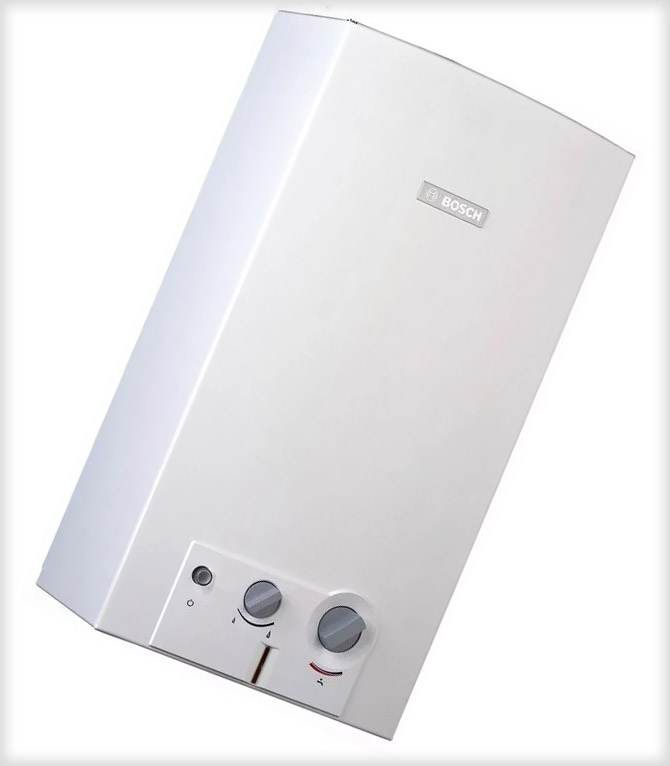
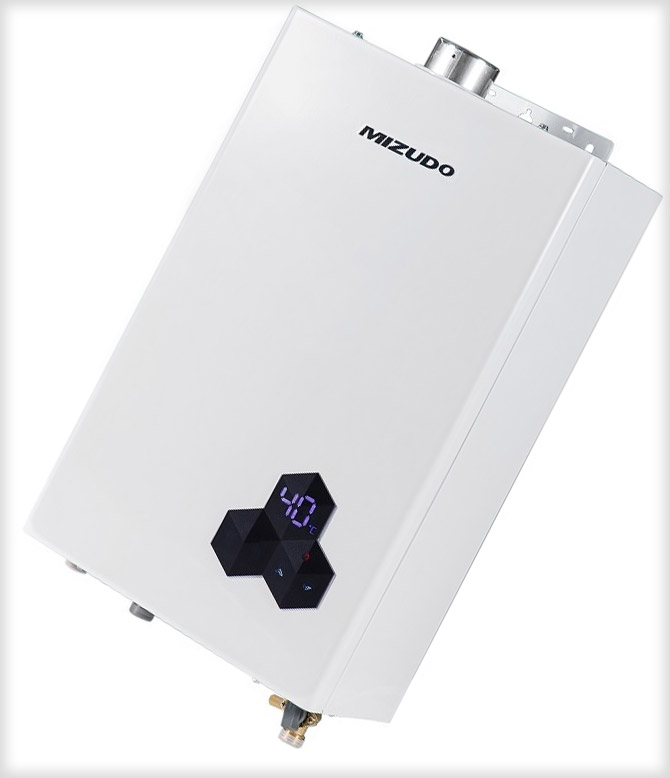
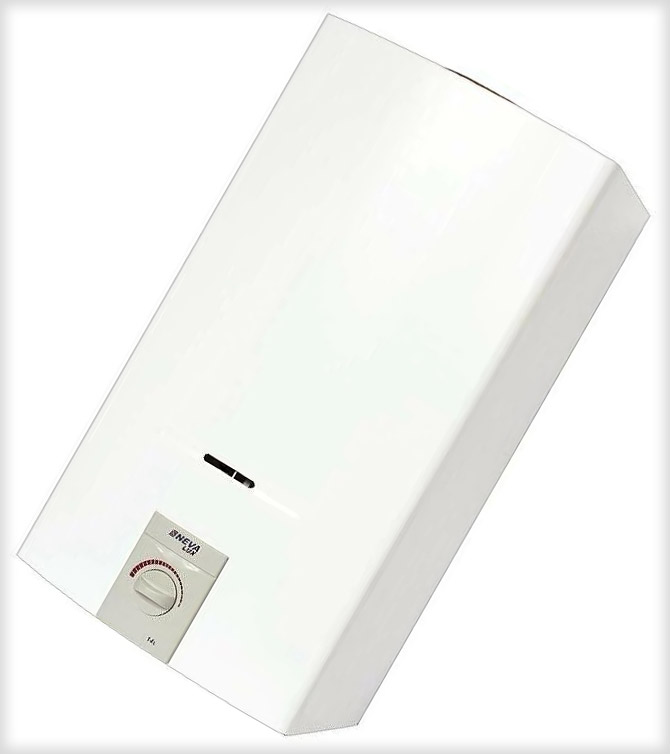
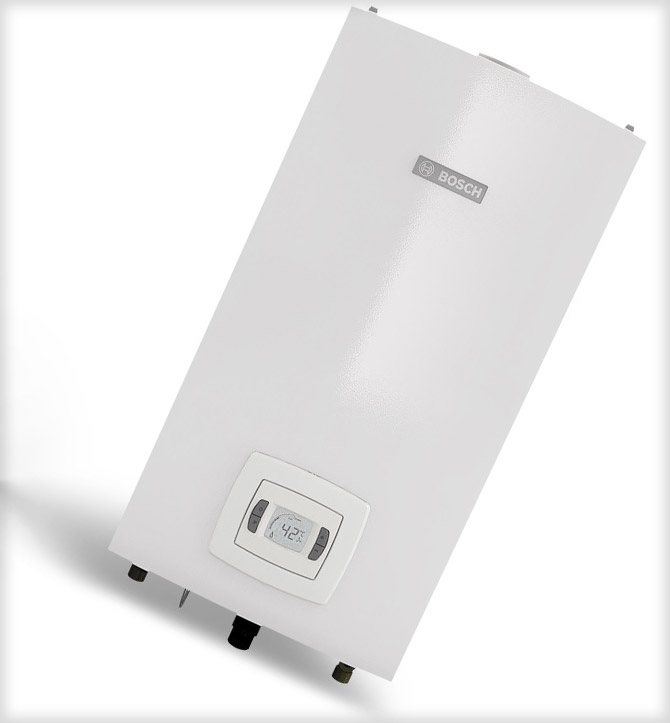
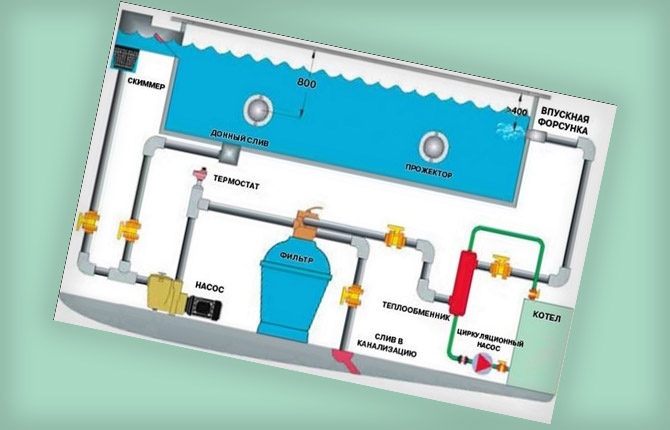
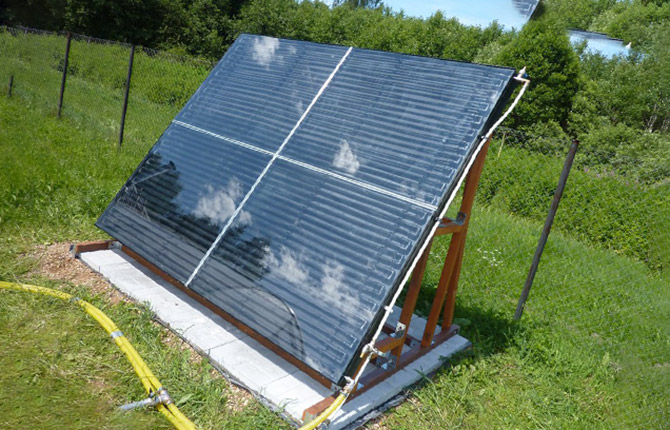




On average, the column lasts up to 10 years, then problems with the heat exchanger begin and need to be replaced. If you use it for a pool, wear will occur within a couple of years. Maybe a heating boiler is still better?
I don’t know, my pool is directly heated without a filter. The speaker is Czech, about 20 years old. True, it was made under Bosch license. What couple of years are we talking about? You need to buy a normal device, then it will take a long time to heat up.